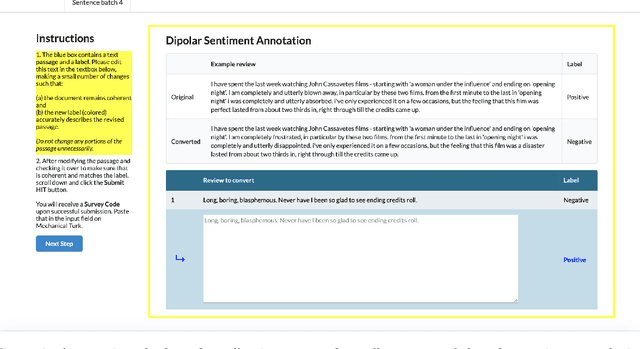Learning the Difference that Makes a Difference with Counterfactually-Augmented Data
Paper and Code
Sep 26, 2019



Despite alarm over the reliance of machine learning systems on so-called spurious patterns in training data, the term lacks coherent meaning in standard statistical frameworks. However, the language of causality offers clarity: spurious associations are those due to a common cause (confounding) vs direct or indirect effects. In this paper, we focus on NLP, introducing methods and resources for training models insensitive to spurious patterns. Given documents and their initial labels, we task humans with revise each document to accord with a counterfactual target label, asking that the revised documents be internally coherent while avoiding any gratuitous changes. Interestingly, on sentiment analysis and natural language inference tasks, classifiers trained on original data fail on their counterfactually-revised counterparts and vice versa. Classifiers trained on combined datasets perform remarkably well, just shy of those specialized to either domain. While classifiers trained on either original or manipulated data alone are sensitive to spurious features (e.g., mentions of genre), models trained on the combined data are insensitive to this signal. We will publicly release both datasets.
 Add to Chrome
Add to Chrome Add to Firefox
Add to Firefox Add to Edge
Add to Edge